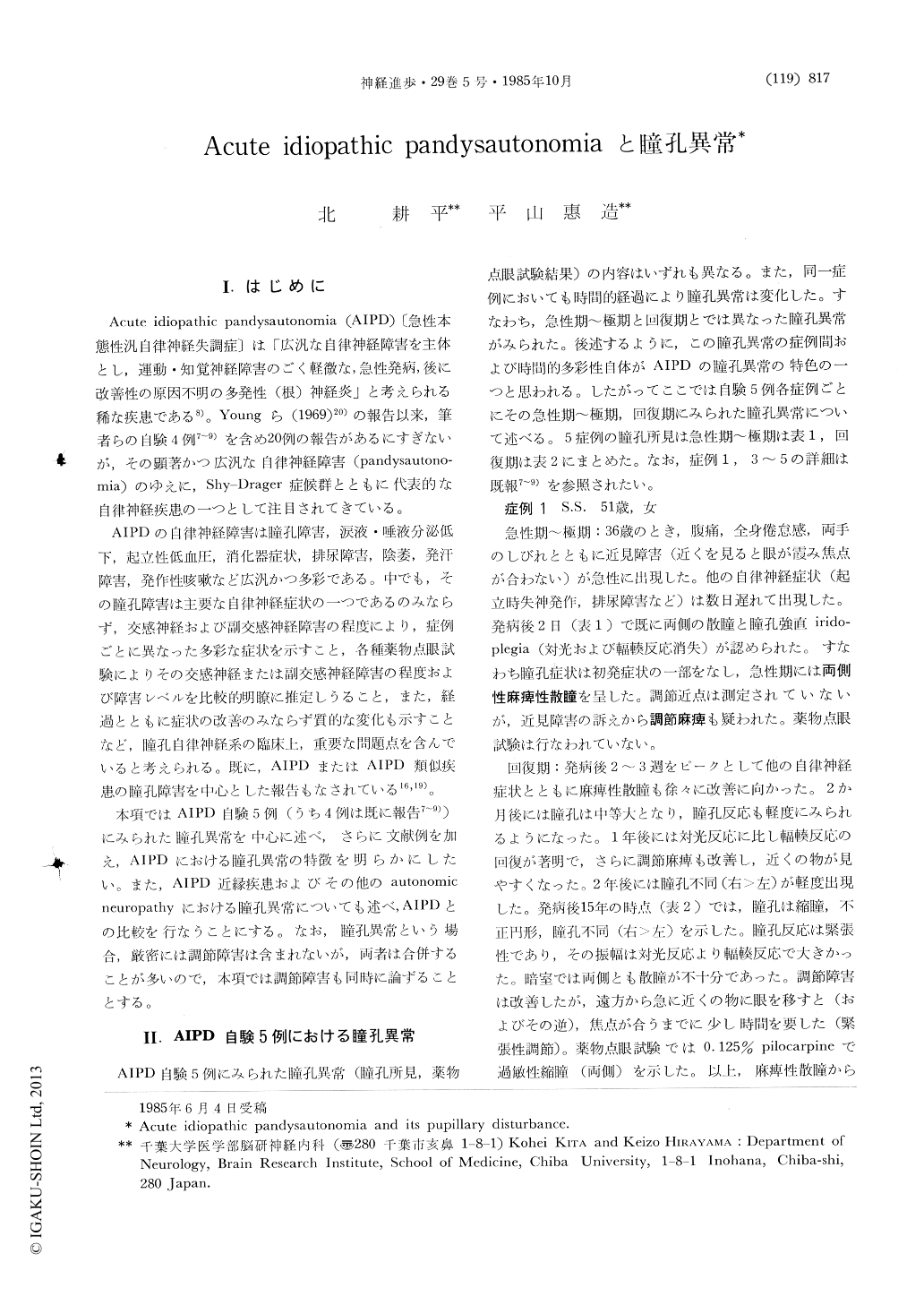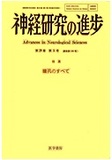Japanese
English
- 有料閲覧
- Abstract 文献概要
- 1ページ目 Look Inside
I.はじめに
Acute idiopathic pandysautonomia(AIPD)〔急性本態性汎自律神経失調症〕は「広汎な自律神経障害を主体とし,運動・知覚神経障害のごく軽微な,急性発病,後に改善性の原因不明の多発性(根)神経炎」と考えられる稀な疾患である8)。Youngら(1969)20)の報告以来,筆者らの自験4例7〜9)を含め20例の報告があるにすぎないが,その顕著かつ広汎な自律神経障害(pandysautonomia)のゆえに,Shy-Drager症候群とともに代表的な自律神経疾患の一つとして注目されてきている。
AIPDの自律神経障害は瞳孔障害,涙液・唾液分泌低下,起立性低血圧,消化器症状,排尿障害,陰萎,発汗障害,発作性咳嗽など広汎かつ多彩である。中でも,その瞳孔障害は主要な自律神経症状の一つであるのみならず,交感神経および副交感神経障害の程度により,症例ごとに異なった多彩な症状を示すこと,各種薬物点眼試験によりその交感神経または副交感神経障害の程度および障害レベルを比較的明瞭に推定しうること,また,経過とともに症状の改善のみならず質的な変化も示すことなど,瞳孔自律神経系の臨床上,重要な問題点を含んでいると考えられる。既に,AIPDまたはAIPD類似疾患の瞳孔障害を中心とした報告もなされている16,19)。
Acute idiopathic pandysautonomia (AIPD), which is one of the representative diseases of the autonomic nervous system, is considered to be an acute idiopathic pandysautonomic poly-(radiculo)-neuropathy with slight motor or sensory disturbances followed by remission. Pupillary disturbance is one of the important autonomic disturbances of AIPD. In this paper, we reported the pupillary abnormalities of our five cases of AIPD and discussed the clinical feature of the pupillary disturbance including accommodation disturbance in AIPD with eight reported cases in literature.

Copyright © 1985, Igaku-Shoin Ltd. All rights reserved.


